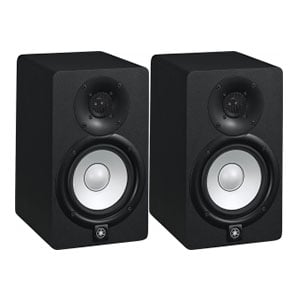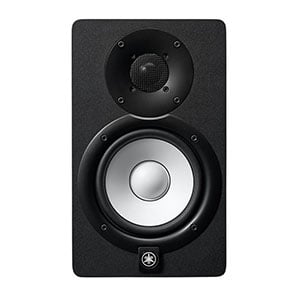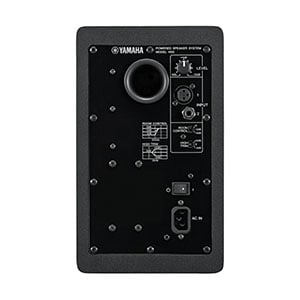- Home
- Instruments
- Gear
- Recording
- Lessons
- Reviews
- Blog


| Controls: |  |
| Features: |  |
| Performance: |  |
Yamaha's monitor speakers have quickly become popular for a number of reasons. None more than HS series. Yamaha HS5 belongs to the more attainable category of these speakers and is also one of the most attractive monitors you can get under $500. Let's take a closer look to see why.

When it first hit the market, Yamaha HS5 had caused a lot of positive hype due to its design. There was something about the all black cab and its white low-frequency driver cone, that appealed to the masses. Yamaha immediately offered the same speaker in an all white theme, with a black driver surround, which was also well accepted. In essence, there is nothing spectacularly different or exotic about the HS5 on the outside. However, Yamaha's cabinet construction technology really puts things into perspective.
Build quality of HS5 is impressive, to say the least. They have managed to reduce cabinet resonance to a point where it almost has no negative impact on the speaker. Overall, there is something about HS5's minimalist aesthetics that really makes it abnormally attractive, even though there are many other speakers out there who are very similar. Even so, HS series still stands out.

In standard Yamaha fashion, the hardware matches and outperforms the aesthetics by a long shot. HS5 comes packing a set of impressive transducers. The item's 1″ tweeter is interesting in a sense that it reaches up to 30kHz, thus extending that high end quite a bit without suffering from distortion. Yamaha's 5″ low-frequency driver might come across as underpowered due to its size, but it takes care of the low-end quite formidably. Both of these transducers have dedicated amps, making HS5 a bi-amped design.
Combined, both cabs are capable of delivering some 70 Watts of power. In terms of room acoustic adjustments, Yamaha HS5 features an HF trimswitch and a Room Control switch. Former can boost or trim the higher frequencies while the latter cuts out the bottom 500Hz when activated. Lastly, we have the 1/4″ TRS and XLR inputs.
While Yamaha HS5 sounds great on paper, the truth is that you can find a number of much beefier monitors for the same amount of money. This leads to a logical question of how good HS5 really is? Let's start things off by saying that you won't get too much bass. That's just a byproduct of leaving a 5″ cone to deal with the lower end. However,
the overall response is pretty flat.
Anywhere from 60Hz to around 15kHz, you are looking at a more or less even response. Oscillations are within +-3 dB, which is acceptable, to say the least. One thing to keep in mind is that Yamaha HS5 requires you to position them far from the walls. Their ports are tuned to perfection, but they don't do well with obstacles within a couple of feet.
At the end of the day, Yamaha HS5 is a well built and great sounding monitor. So far, it's still one of the best values for the money. If we had to place it within a specific category, we'd say it's an awesome tool to have in a smaller studio.
For more info about the Yamaha HS5, click here.
For more studio monitor under $500 you might like, click here.

Reader Interactions